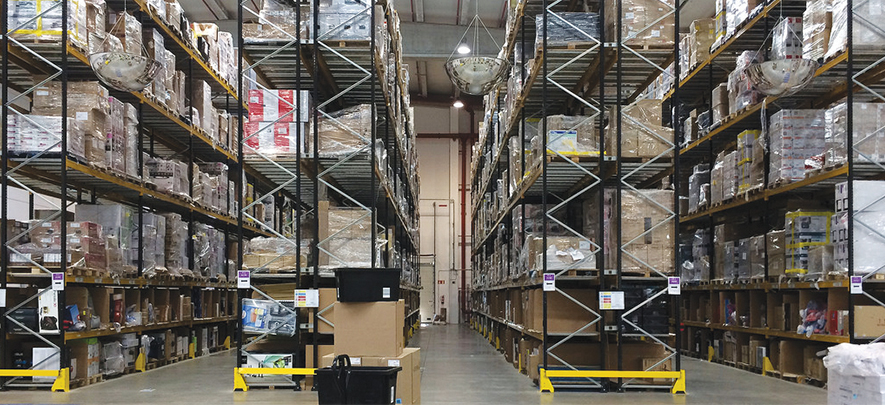Bringing efficiency to e-commerce warehousing with technology

Ecommerce
396 week ago — 5 min read
The rise in online shopping has led to a surge in the e-commerce industry, which in turn has raised the demand for specialised e-commerce warehousing. Since opening an online store has become extremely easy, retailers are now shifting their focus towards developing their storage and distribution channels. This is especially important in case of online stores as the lack of a physical store requires an added focus towards the post-sale services offered. And, in order to maintain brand experience and reliability, they have to find ways and methods of enhancing their customer’s brand experience.
Take a look at some of leading warehousing practices followed by the online retailing industry:
Ergonomic organisation of products
One of the main benefits of online selling is the lack of constrictions like that of a physical store. It allows a retailer to cater to a wider audience and provide a wider range of products. But a large variety of products can also become very chaotic and therefore requires a simplified organising system.
Tip: Analyse your customer’s buying patterns to identify popular products and combinations. Once you have that data, arrange the products that are often bought together in the same area as ergonomic organising will simplify the sorting and dispatch process, thus helping you to save time.
Automated processes
In order to proactively pull orders and subsequently dispatch them as soon as possible, it is important to analyse all processes and assess the scope of including automation technology in the day-to-day operations. Depending on the scope of your operations, you can implement automated guided vehicles (AVGs) or employ the conveyor belts to transport equipment from one place to the other. Both AVGs and conveyor scales can be linked with an operating software that handles the inventory to make restocking and product dispatch more convenient. It also reduces the need to employ additional manpower to handle such activities, thereby reducing the costs as well as the chances for error.
Leveraging technology
The most ideal way to manage your entire inventory is to invest in a warehouse management system which helps keep a track of stock and SKU locations. Such software even provides the option of intelligent reporting, allowing for the analysis of the overall output. With the increased focus towards automation, warehouse management software is also being developed to make provisions for integration with automated equipment to enhance warehouse productivity.
Invest in Big Data
The best way to optimize warehousing operations is to collect and study all orders, inventory demand, delivery rates and returns. This helps ascertain inventory needs in advance and predict future buying trends. Analysing all past records, also helps identify loopholes and process fails so that control methods can be implemented to avoid them in the future. This will help maintain quality control and meet industry standards.
The best method to optimise warehousing operations is approach the warehousing process like any other business process. Start from planning the flow of operations, and organise and staff accordingly. Once the process is in place, identify key result areas and find ways of reducing chances of error by investing in various types of technology available to improve inventory control and optimize output. Operations management software and automation are especially beneficial in such cases as they allow pre-programming specific tasks, removing the need for additional supervision. This frees time and allows focusing on key result areas, subsequently helping allocate resources to produce optimal profits.
To explore business opportunities, link with us by clicking on the 'Invite' button on our eBiz Card.
Article contributed by Kevin Hill for STOrai Magazine
Disclaimer: The views and opinions expressed in this article are those of the author and do not necessarily reflect the views, official policy or position of GlobalLinker.
View STOrai 's profile
Other articles written by STOrai Magazine
The Art & Science of People Pleasing in Retail
28 week ago
Enhanced Brand Storytelling in the Digital Age
59 week ago
Most read this week
Trending
Learning & Development 60 week ago













Comments
Share this content
Please login or Register to join the discussion